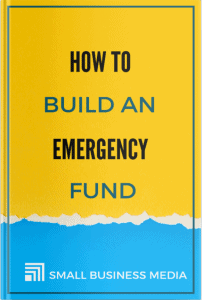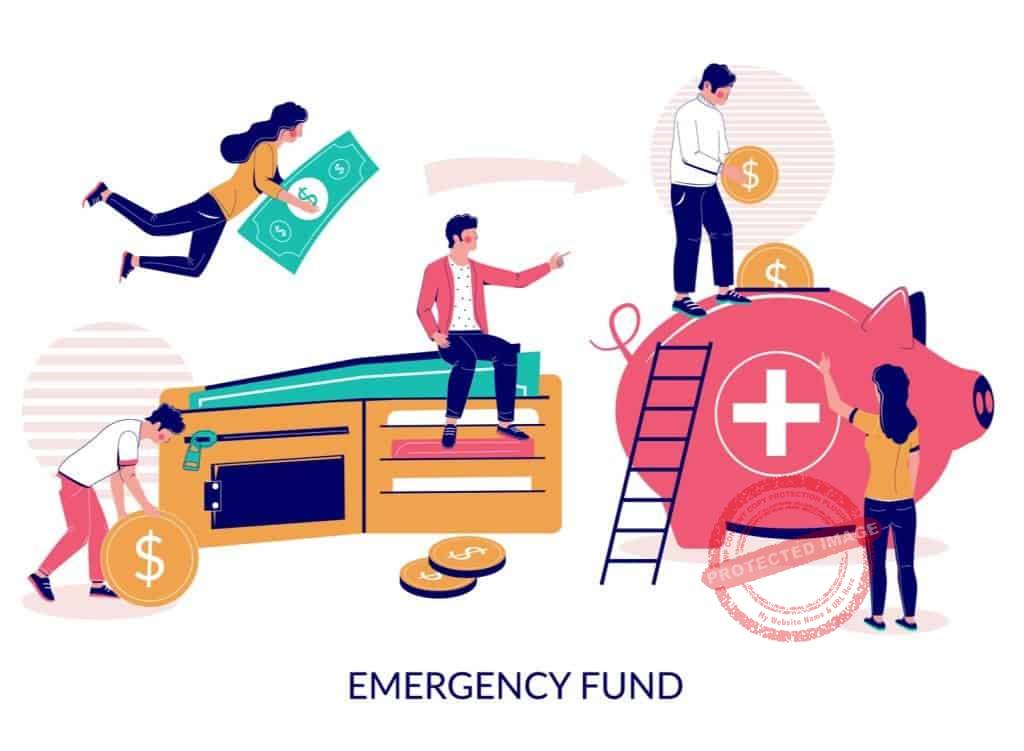Do you want to know how to build an emergency fund?
Having an emergency fund is very important.
Hence the need to learn how to build one. Life in itself is full of uncertainties and unforeseen occurrences, and you should always be ready for any eventuality.
And an emergency fund is precisely made for that purpose.
A lot of people have had to learn the hard way the danger of going through life without preparing for uncertainties and emergencies.
When the Covid-19 pandemic was raving in the year 2020 for instance, many individuals, families, and businesses learned the importance of this.
Many who were in a paid employment lost their jobs and even entrepreneurs felt the effect of the pandemic hard on them.
Business sales were no longer moving as they used to, and sadly a lot of businesses had to close down.
This is just an example of unexpected situations or challenges that might cause difficulties for us.
Other cases of uncertainties that might count as emergencies are ill health, a major home repair, the death of a close family member, or even natural disasters.
All these situations and others like them require funding to effectively cater for them and salvage the situation.
And that is why a lot of importance is attached to having an emergency fund.
In this article, you will learn first and foremost what an emergency fund is, and the benefits of building one.
Also, there are particular strategies you can put in place immediately to start building an emergency fund.
We will take you through all of these, so you can be well prepared for when such emergencies come up.
Emergency Fund – What it Means
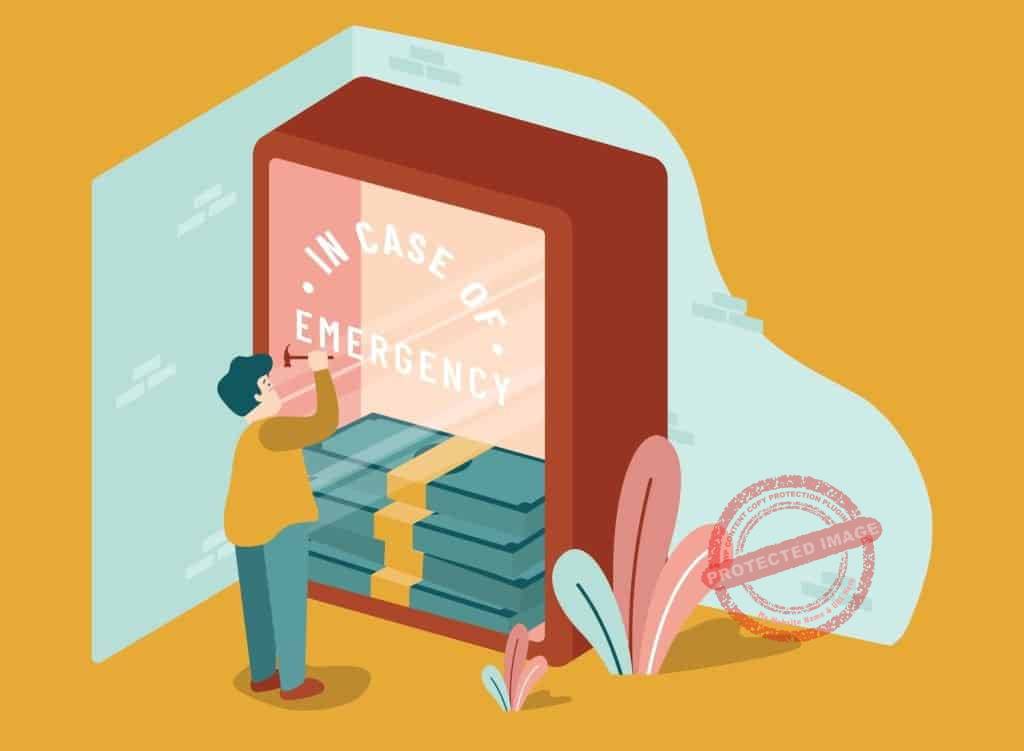
Just as the name implies, an emergency fund is simply a fund that is set aside for times of emergency.
It is a part of your portfolio where you set aside money or part of your earnings and keep the money stock up for when emergencies arise.
Unexpected expenses should always be expected, given how easily things can change and a presently good situation can degenerate.
Hence, it is good to have a safety net that gives you financial security at such times.
This is what an emergency fund does for you.
When it comes to how much you should have stashed up in your emergency fund, there are different opinions on that.
Many financial experts recommend keeping about 3 to 6 months worth of expenses in your emergency funds.
Others advise that the number of months’ worth of expenses should even be more than that.
Well, there is no particular rule on what the number of months worth of expenses that make up your emergency fund should be.
This is because there are different factors you need to put into consideration before deciding what works best for you.
Top on the list of factors to consider is your circumstances.
If you are a single entrepreneur, for example, you might be able to afford an emergency fund of expenses covering a fewer number of months.
On the other hand, someone who has a family would generally need a bigger emergency fund than the former.
The goal though is to have enough money stashed up in a reserve for when unexpected events or emergencies arise.
Benefits of Building an Emergency Fund
Living your life from one paycheck to another without having plans for cases of emergencies is a recipe for disaster.
Unfortunately, a lot of people have had to learn this truth the hard way.
When emergencies arise is the worst time to start thinking about the way out.
At such times, you are not with the right mindset and emotional place to make the best choices, especially financial choices.
Hence, the calm before the storm, or in other words, the time when you have some financial stability is the best time to plan for the stormy time.
With that in mind, let us enumerate some of the benefits of building an emergency fund now, to show how important this is.
It Helps to Avert Debts
When emergencies arise that involve financing, the first inclination for someone who has no fallback funds is a loan.
There are a lot of options available for getting a loan when you have emergencies to take care of.
You might borrow money from family and friends or take a loan from the bank.
The problem with these options is that many of these loans come at a high interest and can put you into bad debts.
If care is not taken, the debts could start to accumulate and before long you have huge debts to offset.
And that is why an emergency fund is important, as you have a fallback option when emergencies arise, instead of going into debt.
If you also currently have debts on your neck, preparing an emergency fund would help you to avoid adding to these.
It Helps you Cultivate a Good Savings Habit
You could look at an emergency fund as savings, even though in reality this should be separate from your savings portfolio.
However, when you make it a goal to build an emergency fund, it can equally help you improve your savings habit.
A lot of us struggle with savings, as this needs a lot of discipline to start and keep up with.
Having that guarantee that you have money saved up somewhere for cases of emergency gives you the liberty you need to also save up funds.
Another way that building an emergency fund helps your savings habit is in keeping your savings intact.
Many times, we might resort to jumping into our savings when we have projects to complete or urgent needs arise.
That is what an emergency fund is meant for and not your savings portfolio.
Hence, with an emergency fund intact, you do not have to constantly dip your hands into your savings unnecessarily.
It’s a Lifesaver for Times of Emergency
This is exactly what an emergency fund is meant for, saving the day in cases of emergency.
Because of how unpredictable life is, you cannot be very sure or confident of what would happen tomorrow.
Take the case study we used at the beginning of this article for example.
When the covid-19 pandemic struck, no one saw it coming, and the effect it had on people’s jobs and businesses was catastrophic.
Those who do not have an emergency fund felt it more, as there was nowhere to run to when the going got tough.
Aside from a global pandemic, there are other types of uncertainties and unexpected events that can befall anyone at any time.
While you can do little or nothing to prevent many of these, there is something you can do though to prepare.
And that is building an emergency fund.
It Reduces Stress and Anxiety
Money issues always cause a lot of stress and anxiety for people, and the reason is obvious.
When you are not financially stable, you tend to worry a lot, thinking about where your next meal is coming from and other responsibilities.
Now imagine that in the midst of all these, there is an emergency that needs financial commitments.
Of course, that would only increase your stress and anxiety levels.
However, having an emergency fund can relieve you of these fears, stress, and anxiety.
With an emergency fund built and secured, you have more confidence, knowing that you can weather any storm that comes your way.
You Can Earn Interest in it
Another benefit of building an emergency fund is that you have the opportunity to earn interest in it.
However, this depends largely on the type of account you put the money into.
With the right savings account that offers interest, you can accrue additional funds on the money you save as an emergency fund.
That is another added benefit to building an emergency fund.
How to Build an Emergency Fund – The Process
Having seen what an emergency fund is and why it is very important, coupled with some of the benefits that come with it, let us now see how to build it exactly.
Regardless of how old you are now, it is not too late neither is it too early to build an emergency fund.
This is because emergencies can come up at any time, and as such having an emergency fund set up right away is the best decision.
Here are some of the steps you can take to build an emergency fund starting right away:
Determine How Much You Want to Save
The first step to building an emergency fund is deciding the exact amount you want to save up as an emergency fund.
No rules are guiding this and there is no particular amount that you are under obligation to put in.
What you decide to save up in your emergency fund depends on various factors such as your income level, family size e.t.c.
As a principle, it has been suggested that you save up to 6 months of your total expenses as an emergency fund.
But as earlier noted, some experts differ on this and suggest up to 8 months or more.
When it comes to saving up money for emergencies, there is no “doing too much”, as long as you have the means for it.
Hence, check your income level and calculate your total expenses for like 3 or more months.
Then that should be your target amount to save up in your emergency fund portfolio.
You can do a trial period whereby you keep track of your obligatory expenses for some time and then find the average.
This would give you a very good insight into what your expenses look like and what should be your target for an emergency fund.
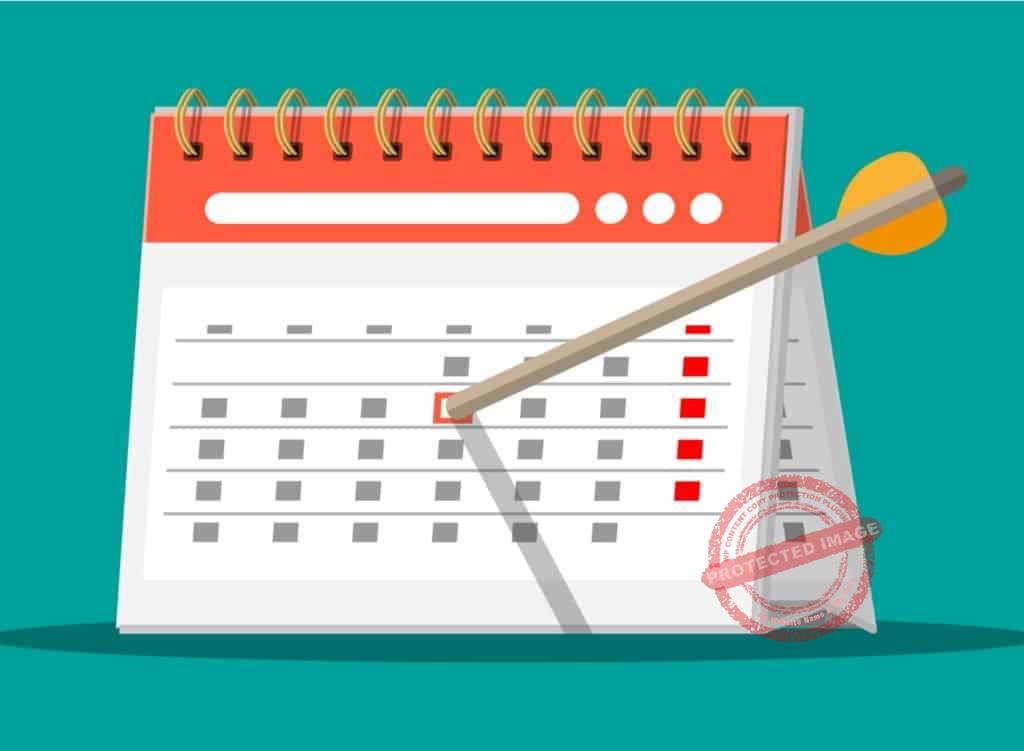
Set a Target Date to Build Up Your Emergency Fund
As with every goal, it is very important that it is specific and also time-bound.
Once you’ve decided how much you want to stock up in your emergency fund, the next thing is to decide when you want to finish setting it up.
Without binding your goal with time, it might be hard to get the discipline to see it through.
Also, it might take you longer than necessary to successfully build up your emergency fund without a target date in mind.
As with the amount to save up in your emergency fund, the target date is not cast in stone and should be one you know can be attainable.
So look at your current earnings and financial situation and decide when you can build up an emergency fund.
This might be 3 months, 6 months, a year, or even longer depending on the factors we’ve just considered.
Set Small Savings Goal
Having gotten the little matters of target amount and date of completion out of the way, the next thing is to spring into action.
You would need to set a goal for saving regularly to build up your emergency fund.
However, when setting this goal, it helps to make it a small one rather than a very big one.
In essence, if you want to save up to 8 months worth of expenses in your emergency fund, for example, it might be best to break it up into saving a month worth every month.
Attempting to aim for the entire sum at once can be quite daunting and unrealistic.
However, when you start small, you can get encouragement and inspiration from the success you have.
When you cross the first hurdle, it increases your motivation to go again and again.
With time, you might even start increasing the target to bigger ones as you complete the smaller goals.
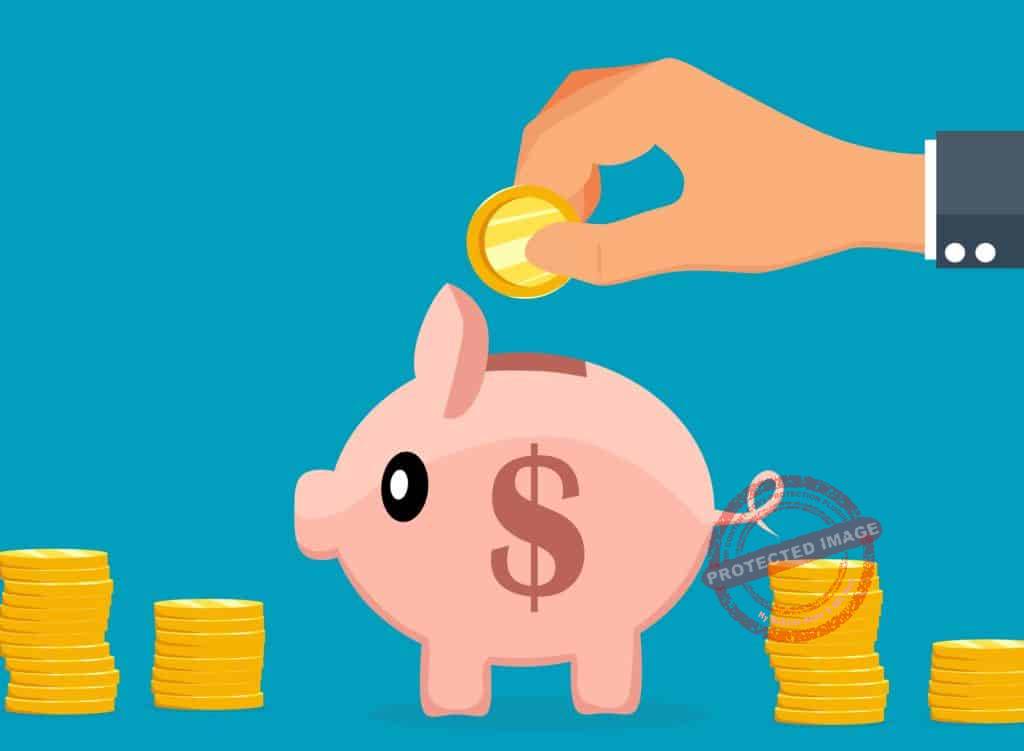
Try Automating your Savings
One of the challenges that come with savings is that it needs serious discipline and commitment to see it through.
You might begin on a very positive note but with time, the motivation might drop.
What can help you avoid this problem while building your emergency fund is automation.
Thankfully, there are a lot of options available to you now to automate your savings.
You can put a standing order in your bank to automatically make a deduction of the amount you are saving into your emergency fund at a particular date.
Also, if you work for an employer, you can have the agreement with your company to pay that amount into your account designated for an emergency fund.
When choosing where to save this money, you should choose an account that you do not readily have access to.
That way, you can make sure that the money is for the purpose you intend it for and not for other things.
Move Some of your Assets into the Emergency Fund
It could be that you already have some existing assets or extra funds not allocated for a particular purpose lying around.
Why not consider moving these into your emergency funds.
We cannot overemphasize the importance of this emergency fund portfolio enough, and hence you should take every opportunity you have to build it up quickly.
Those extra funds or assets can go a long way in helping you reach your goal of building an emergency fund quicker.
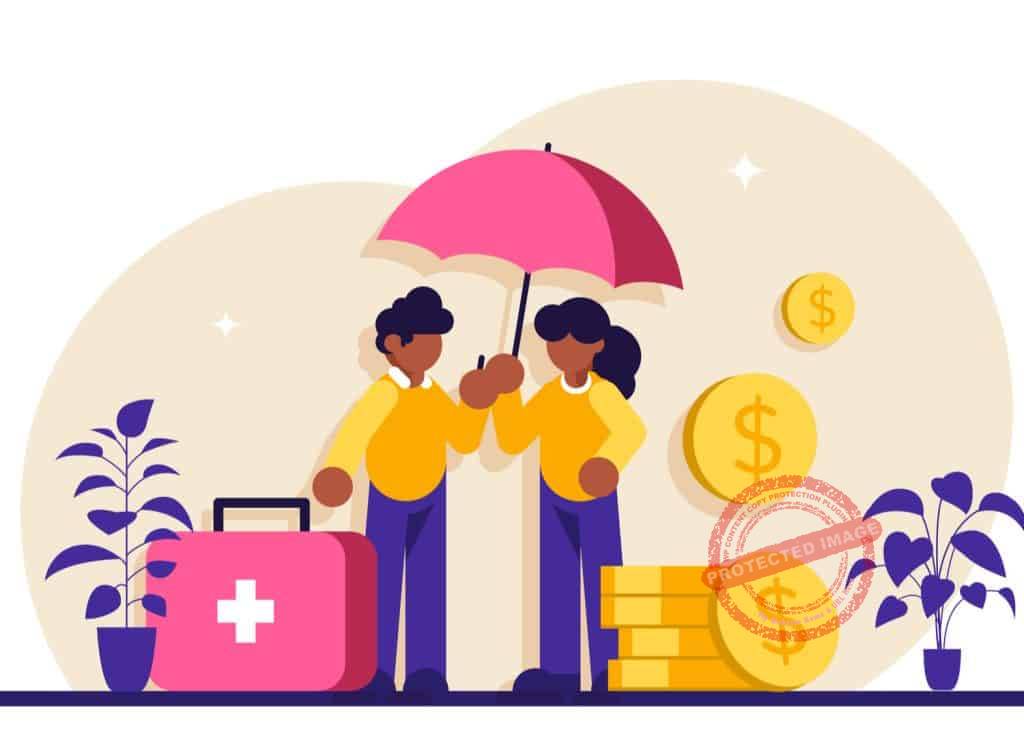
Don’t Mix up Investment Fund and Emergency Fund
Your emergency fund must be a separate portfolio from others, especially investment.
Avoid the temptation of using the same account for money meant for investment and emergencies.
The reason for this is that most investments if not all are very risky, and as such you cannot always guarantee the results.
Using the money meant for emergencies for investment can make you lose your saved funds in the worst-case scenario.
On the other hand, if you separate your emergency fund from money set aside for investment, then it is safer.
Repay Existing Debts as your Build Emergency Fund
We understand your excitement and devotion to building an emergency fund, and that is very great.
However, if you are currently servicing high-interest loans or credit card loans, you should prioritize this.
This is because leaving your debts unattended while you try to build an emergency fund will not work.
At best, you might still end up using the little you’ve been able to save after a while to repay some debts later.
And that can put you into an unending cycle of debts repayment.
What you can do at the start is dedicate a little sum to your emergency fund while you repay your loans.
If you do this, you can comfortably take care of these two important matters, and you can increase your savings as time goes on.

Control your Spending
One habit that can negatively affect your goal of building an emergency fund is overindulgence in spending.
When you spend too much, especially on unnecessary things or luxuries, it affects how much you can save up.
Also, when you have successfully started your journey on saving to build an emergency fund, you still need to curb your spending.
Failure to do this might make you start seeing the need to spend more and even end up dipping hands into your emergency fund.
Direct All Extra Funds into Emergency Fund
There are times when you get the money that you did not plan for maybe as gifts, refunds, or bonuses.
Instead of adding that extra fund to the money you spend, you can channel that into your emergency fund.
Doing this will help you reach your goal faster.
Additionally, this can provide you will enough funds set aside for cases of emergency.
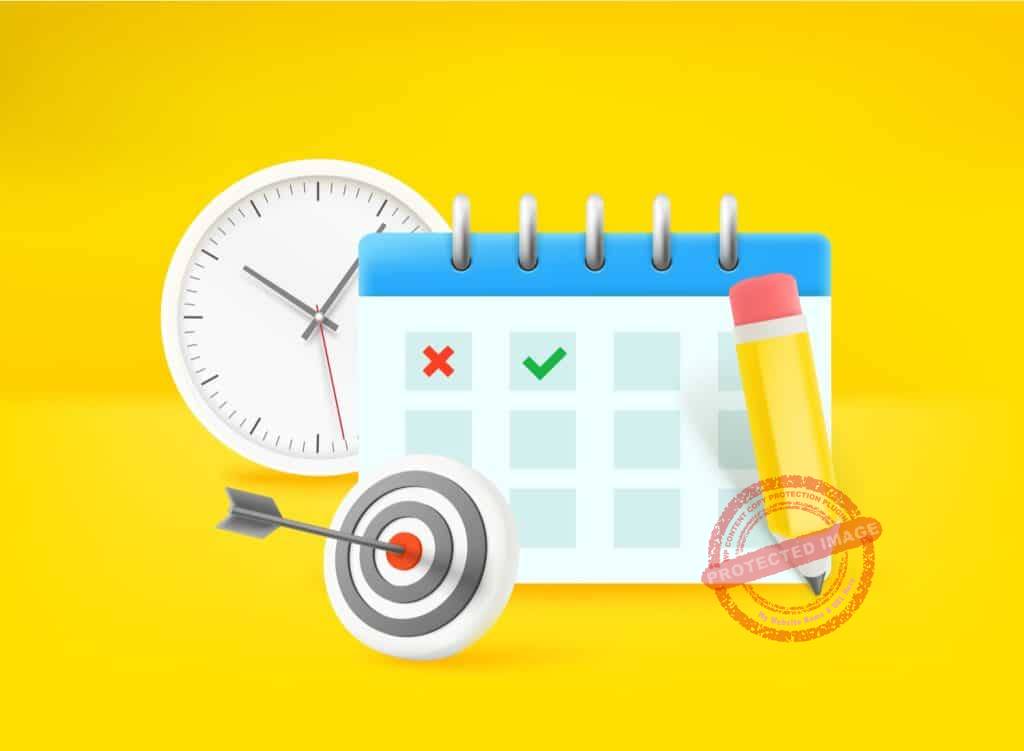
Once You Reach Your Target, Stop
As good as building an emergency fund is, it is possible to overdo it, and you should be mindful of that.
For one thing, you should save an emergency fund in an account where you can easily access for that purpose.
Hence, the options open to you are usually savings account with low-interest yield.
It therefore would not make financial sense to put in all your savings in an emergency fund portfolio.
Once you’ve reached your target, you can start setting aside other extra funds into another portfolio for investment purposes, or one with more returns.
That will help you build your wealth faster and become financially free.
Conclusion – How to Build an Emergency Fund

No one prays for emergencies or events that demand us to be financially incapacitated.
However, this is a very big possibility and something that you cannot predict.
The good news though is that you can prepare for such, and that is by building an emergency fund.
So why not start right away, and start making a shade for the stormy times.
Click on Buy Now For A PDF Version of This Blog Post
 |
